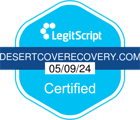Reports about the opioid crisis and drugs fentanyl, carfentanil and heroin have dominated recent headlines. During the years 200-2016, the number of lives lost to opioids has more than quadrupled. Though opioids have taken up a lot of our collective attention during the first part of the twenty-first century, it would be a mistake to ignore another addictive substances that have had a negative impact on people’s lives: alcohol.
A new report[1] released from the California Health Care Foundation looked at[2] substance use disorders in California. It examined the impact of alcohol, opioid and other substance use over time. Although this particular report was specific to California, the figures are a fair representation for situations in Arizona and nationwide as well.
Key Findings from Substance Abuse Report
The report, entitled “Substance Use in California: A Look at Addiction and Treatment,” has several key findings, including:
- Alcohol use disorder was the most common type of substance use disorder among California residents. Approximately six percent of Californians met the criteria for alcohol dependence. Three percent of state residents met the criteria for dependence on illicit drugs.
- Experimenting with drugs and alcohol is likely to start during the adolescent years. By the time they reach Grade 11, over half of students in California have tried alcohol and close to 40 percent have tried marijuana.
- Young adults (aged 18-25) were most likely to develop substance use disorders, with the likelihood close to twice the state average.
- The number of Emergency Department visits related to heroin in California has tripled during the years between 2006-2017.
- Alcohol was responsible for more nonfatal Emergency Department visits in California than all other drug diagnoses combined.
Substance Abuse Disorders Treatable
Substance use disorders, including alcohol use disorder, can be treated and managed. Like other chronic illnesses, the risk of relapse is a real and ongoing one. Behavioral therapy helps people with substance use disorders change unhealthy coping mechanisms for new ways of dealing with destructive behaviors. Medications can be used to control cravings for opioids and alcohol and reduce the physical reward a user experiences when they are ingested.
Naltrexone is among the most common medications, which is used in many different forms. Vivitrol is an monthly injectable version of naltrexone that is often used to help fight cravings.
Sources:
[1] https://www.chcf.org/wp-content/uploads/2018/09/SubstanceUseDisorderAlmanac2018.pdf
[2] http://www.kvpr.org/post/report-substance-use-finds-alcohol-use-most-common



